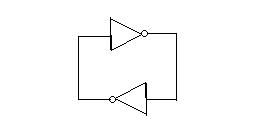grittinjames
Advanced Member level 1
- Joined
- Jun 1, 2006
- Messages
- 479
- Helped
- 44
- Reputation
- 90
- Reaction score
- 32
- Trophy points
- 1,308
- Location
- bangalore india
- Activity points
- 3,985
cmos inverter as a saturated amplifier
Hi,
I have a basic doubt, what will happen if I short input and output of cmos inverter
I am getting different answer from many experts like it will oscilates .it will move to lenear region etc .
Any one please give a satisfactory answer
no doubt you will get 10 points
Hi,
I have a basic doubt, what will happen if I short input and output of cmos inverter
I am getting different answer from many experts like it will oscilates .it will move to lenear region etc .
Any one please give a satisfactory answer
no doubt you will get 10 points
